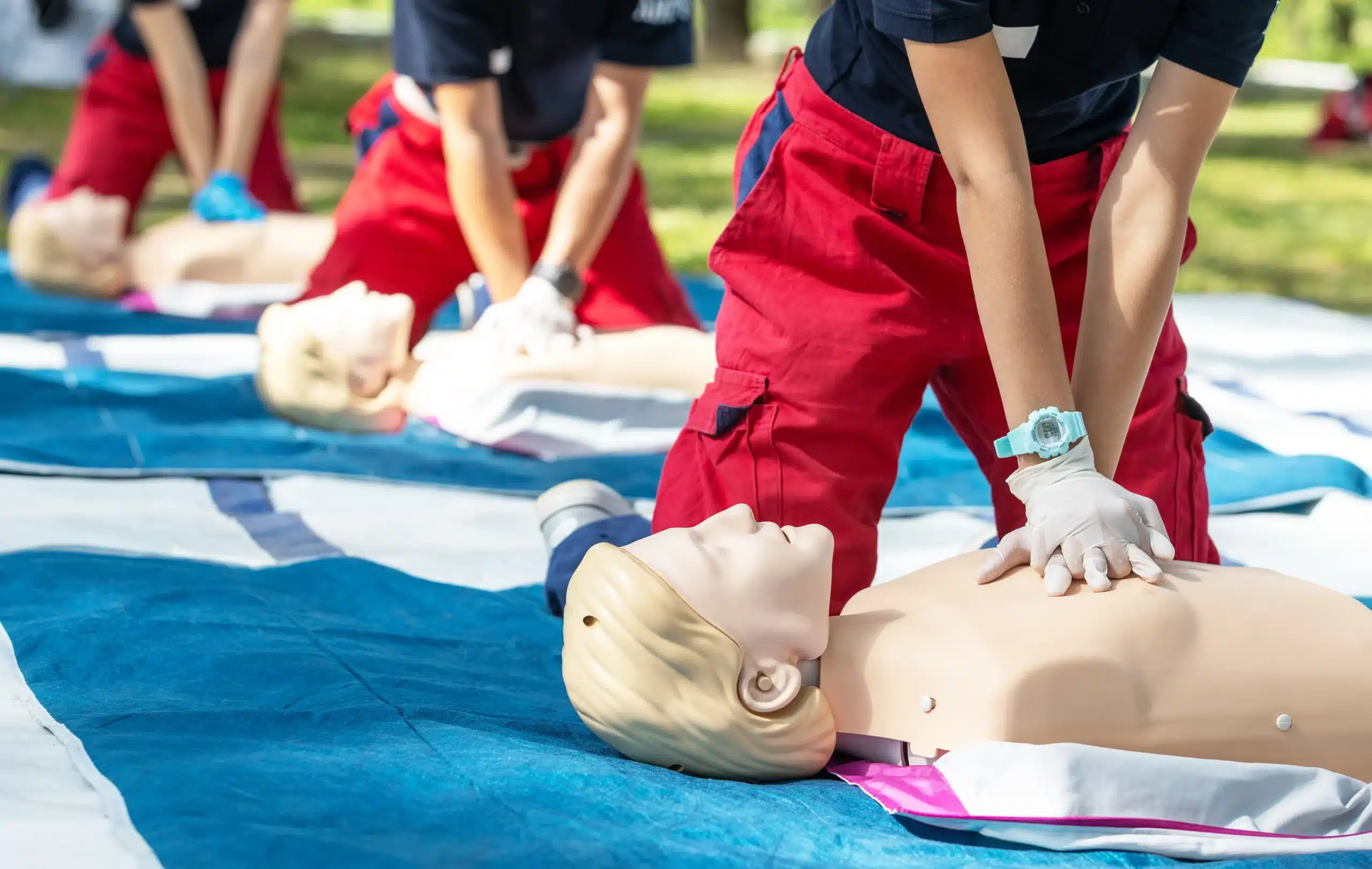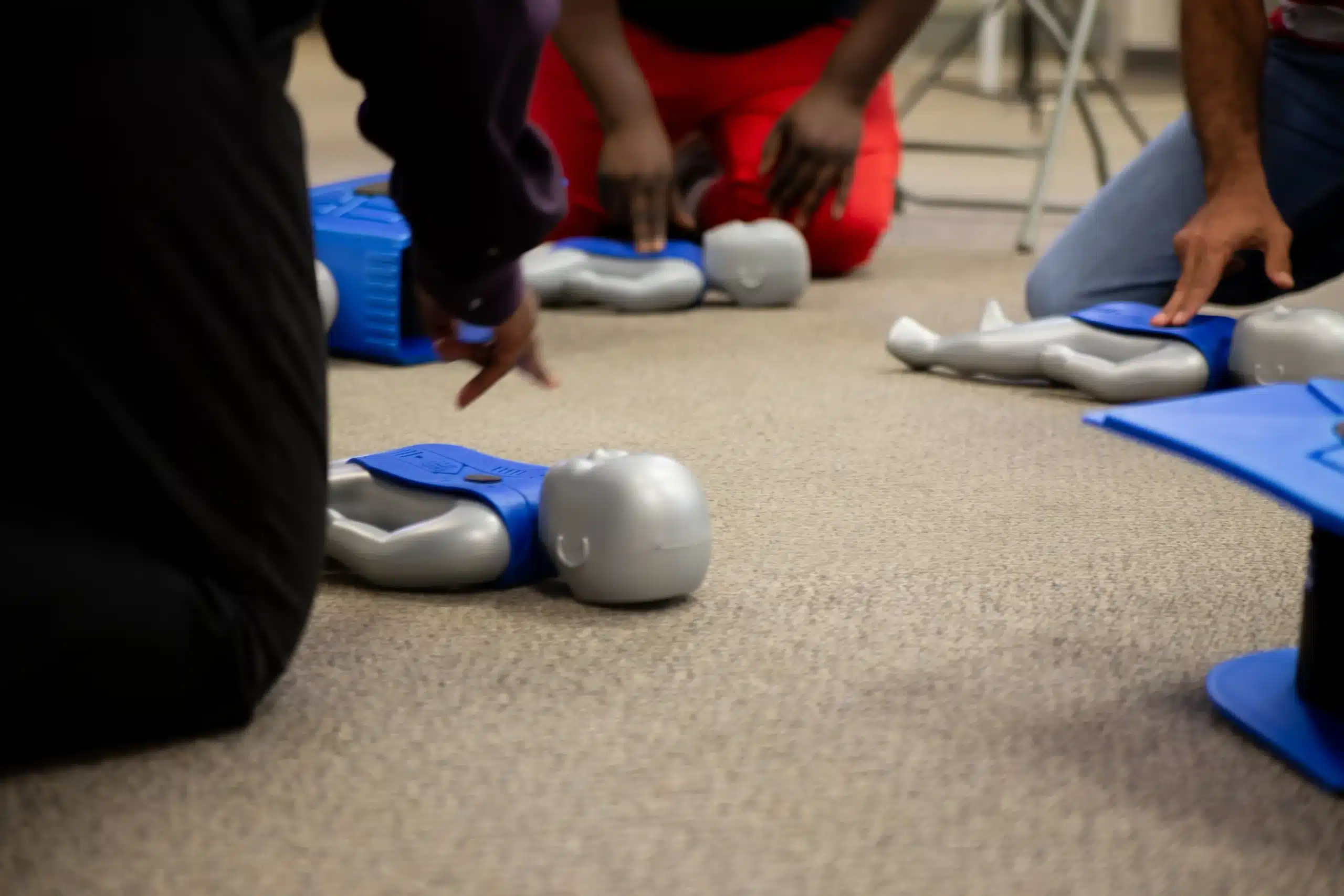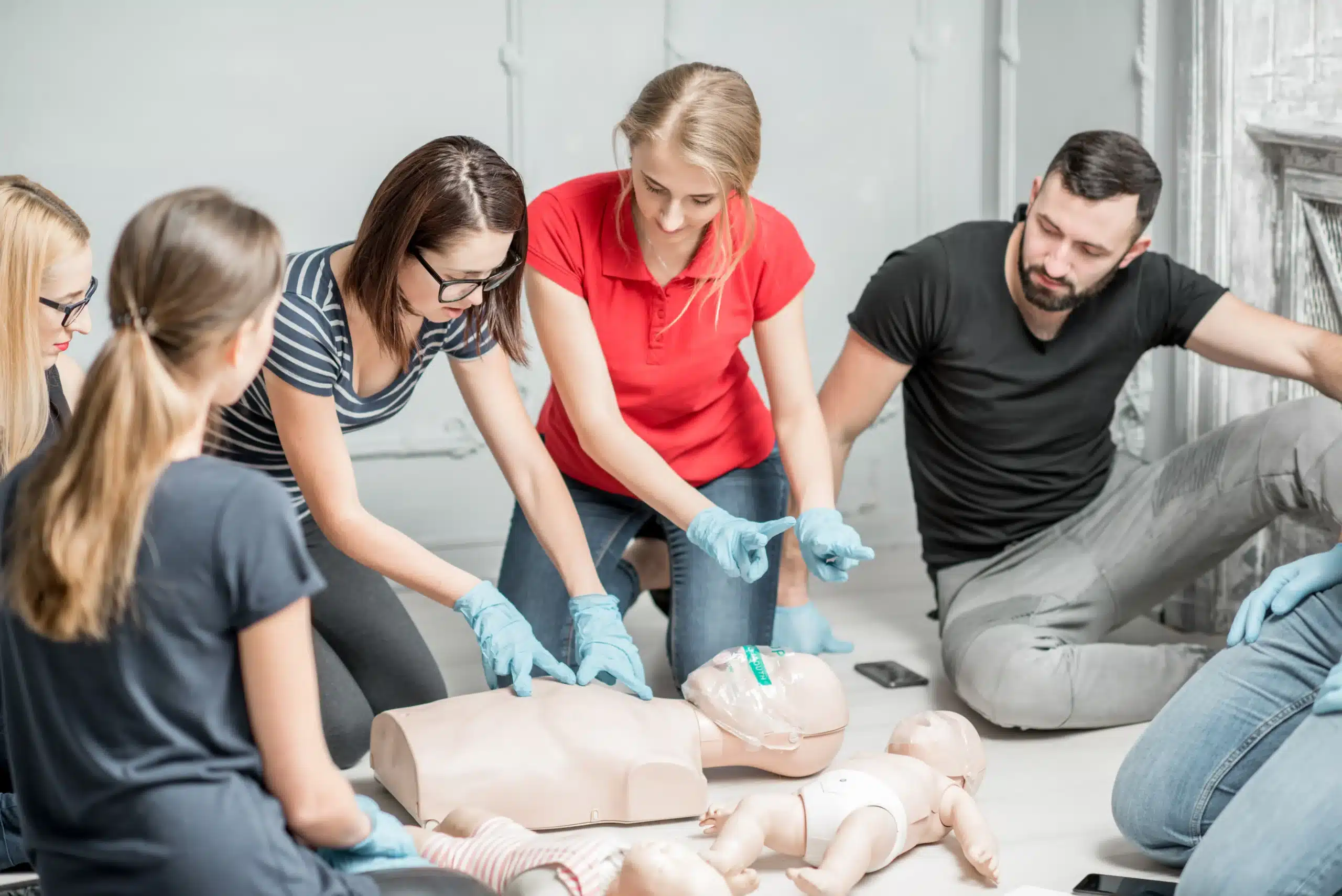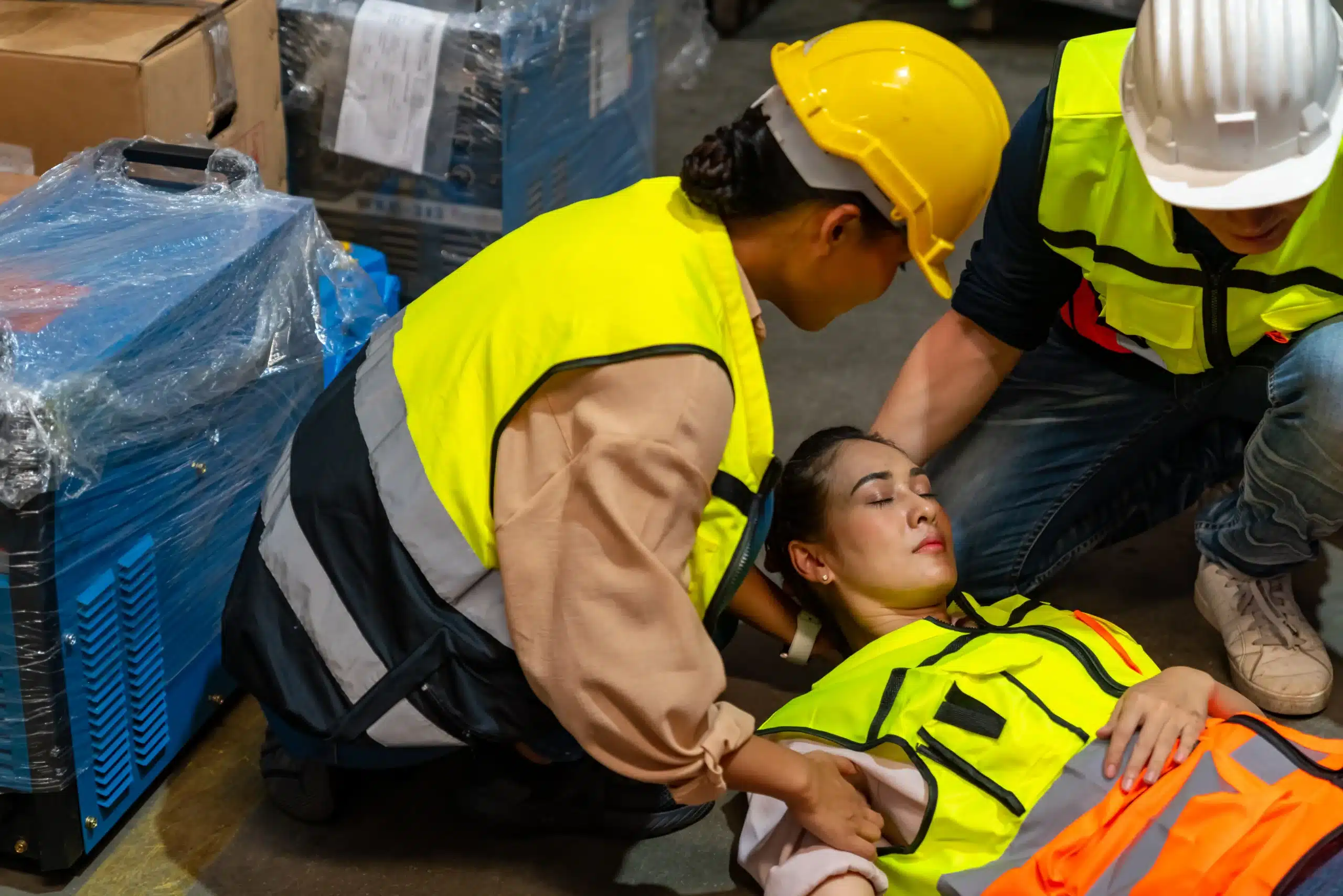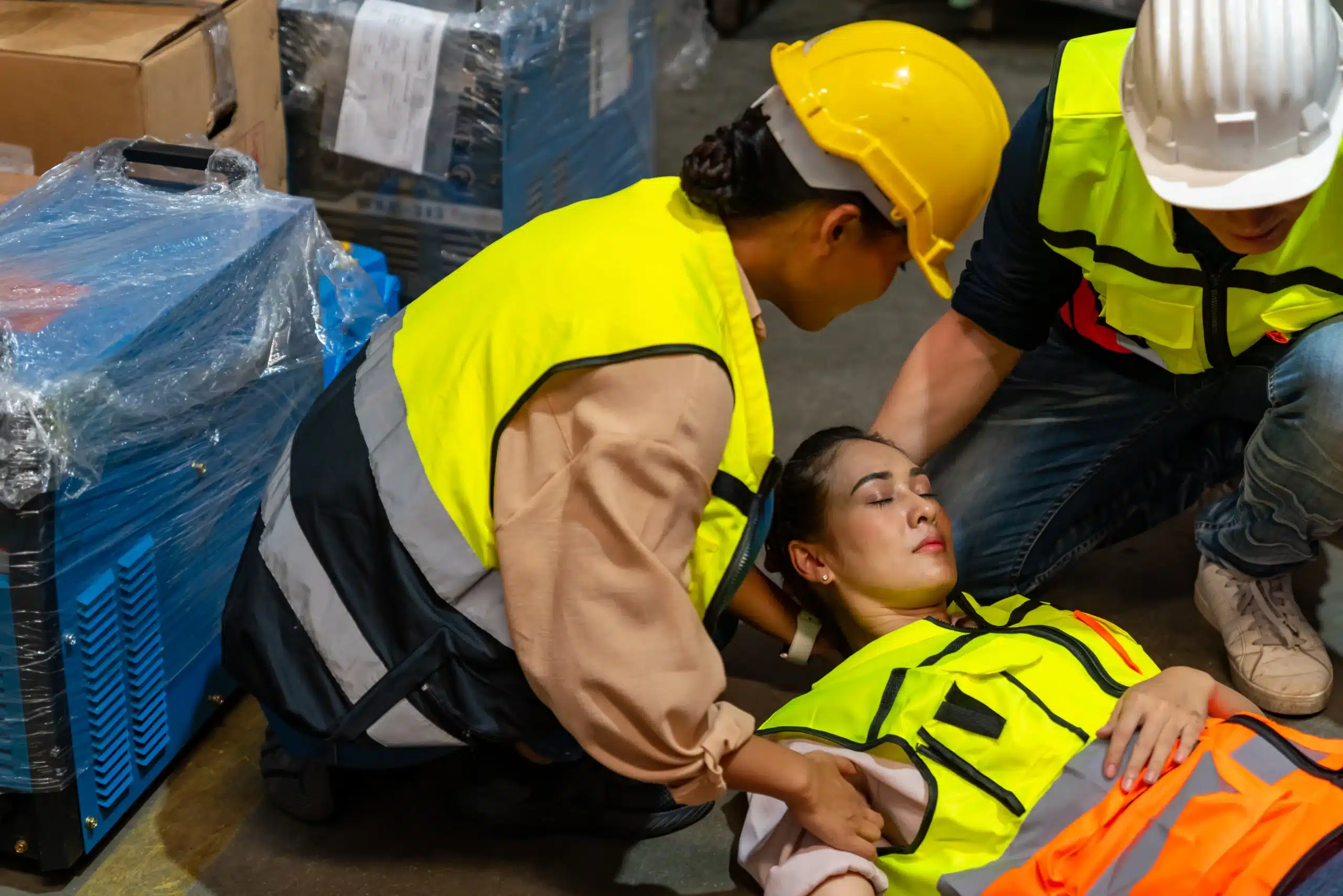Juggling work, family, and other commitments can make it challenging to find time for essential training like CPR. That’s where online CPR classes in Berkeley come in. Offering the flexibility to learn at your own pace and on your own schedule, these courses make acquiring lifesaving skills more accessible than ever. This guide will walk you through the process of finding the right online CPR class in Berkeley for you. We’ll cover everything from the different types of certifications available to the top providers in the area, and we’ll also discuss the cost factors and payment options you can expect. Get ready to empower yourself with the knowledge and skills to make a difference in a medical emergency.
Key Takeaways
- Online CPR training fits your schedule: Learn lifesaving skills at your own pace, making it a great option for busy professionals, parents, and anyone with a packed calendar. Supplement online learning with hands-on practice for the best results.
- Select a reputable online CPR course: A quality program from a recognized organization like the American Heart Association or the American Red Cross ensures your certification meets industry standards and is widely accepted. Look for blended learning options that combine online coursework with in-person skills sessions.
- Set yourself up for online learning success: Create a focused learning environment, manage your study time effectively, and use interactive tools to reinforce your understanding. Hands-on practice remains essential, so seek out opportunities to develop and refine your CPR technique.
What are Online CPR Classes in Berkeley?
What are Online CPR Classes?
Online CPR training gives you the power to learn lifesaving skills at your own speed and on your own schedule. It’s a convenient way to acquire this essential knowledge, fitting easily into your busy life. Online CPR classes in Berkeley offer the same core curriculum as in-person courses, covering topics like recognizing the signs of a heart attack, performing chest compressions, and providing rescue breaths.
Benefits and Limitations of Online CPR Training
The biggest advantage of online CPR classes is their flexibility. You can study whenever and wherever works best for you. This makes online learning ideal for people with demanding schedules or limited access to transportation. However, online CPR training does have some limitations. The primary difference between online and in-person training is the opportunity for hands-on practice. While online courses often include videos and simulations, they can’t fully replicate the experience of practicing on a mannequin with an instructor. Blended learning addresses this by allowing you to complete the coursework online and then attend a shorter in-person session focused on practical skills and assessment.
Types of Online CPR Certifications
Berkeley offers a range of CPR certifications to meet different needs. From basic community training to advanced professional certifications like BLS and ACLS, you can find the right CPR course for your situation. Even renewals can often be done online. Online BLS renewal courses are generally accepted as long as they come from a recognized provider like the American Heart Association or the American Red Cross. Make sure to check with your employer or licensing board to confirm their specific requirements. Berkeley CPR Classes offers a variety of American Heart Association certification courses.
Top Providers and Costs in Berkeley
Finding the right CPR certification course means understanding what each provider offers. Here’s a look at some popular options in Berkeley:
Berkeley CPR Classes
Berkeley CPR Classes offers a range of American Heart Association certification courses, including BLS, ACLS, and PALS. They emphasize customer service and a low-price guarantee, a major plus for budget-conscious students. Check out their BLS course for more details. They also offer discounts for group classes, a great option for workplaces or community groups. For healthcare professionals needing to renew their certifications, Berkeley CPR Classes also provides RQI classes.
American Red Cross
The American Red Cross is a well-known provider of CPR and AED classes in Berkeley. They offer various learning formats, including in-person, online, and blended learning, allowing you to choose the style that suits you. Explore their CPR class options in Berkeley directly on their website.
Safety Training Seminars
Safety Training Seminars, a woman-owned American Heart Association Training Center, has been operating since 1989. They offer various safety training courses and advertise the lowest prices in Alameda County. This makes them a strong contender if cost is a primary concern. Learn more about their CPR classes.
Bay Area CPR
Bay Area CPR partners with Safety Training Seminars to deliver American Heart Association-certified courses, including CPR, BLS, ACLS, and PALS. They also offer first-aid training and can conduct group classes at your location, adding convenience for busy professionals.
American Heart Association
While the American Heart Association doesn’t directly conduct classes, they set the standards for CPR training. They offer resources for finding certified training centers and information on BLS renewal, including options for blended learning.
Typical Price Range and Cost Factors
BLS courses in Berkeley typically range from $75 to $120. Factors influencing cost include the type of certification (BLS, ACLS, PALS, etc.), the course format (online, in-person, blended), and the provider. Berkeley CPR Classes, for example, offers a competitive low-price guarantee.
Payment Options and Discounts
Most providers offer various payment options, and many, like Berkeley CPR Classes, offer discounts for group bookings. Be sure to inquire about potential discounts when registering for your course. Flexible scheduling, including weekend and evening classes, is also commonly available.
Online vs. In-Person CPR: Which is Right for You?
Choosing between online and in-person CPR training depends on your learning style, schedule, and specific needs. Both formats offer distinct advantages, so understanding the key differences can help you make the best decision for your situation.
Flexibility and Convenience
Online CPR classes offer unparalleled flexibility. You can learn at your own pace, revisiting material as needed, and fitting the training around your existing commitments. This makes online learning ideal for busy professionals, parents, or anyone who prefers self-directed study. In-person classes, while offering a structured learning environment, require adhering to a fixed schedule. If you need CPR certification quickly and on your own terms, an online course might be the perfect fit.
Hands-On Practice and Skill Retention
A primary difference between online and in-person CPR training is the hands-on experience. In-person classes provide supervised practice on mannequins, allowing you to develop muscle memory and refine your technique with expert guidance. While online courses excel at delivering theoretical knowledge, they sometimes lack this crucial practical component. For many, physical practice is essential for skill retention, making in-person training the preferred choice. Consider what kind of learner you are when making your decision.
Learning Effectiveness
While traditional in-person training has been the standard, online CPR courses have proven equally effective at conveying information. Studies show that well-designed online platforms can deliver engaging content and improve learning outcomes through interactive modules, videos, and simulations that enhance understanding and knowledge retention. Digital platforms offer a unique opportunity to personalize the learning experience, potentially leading to better comprehension.
Employer Recognition and Acceptance
Before choosing an online CPR course, verify its acceptance by your employer or relevant licensing bodies. While many employers recognize online certifications, some require in-person training, especially in healthcare and other fields where hands-on skills are critical. Confirming your workplace requirements beforehand ensures your certification will be valid.
Blended Learning Options
Blended learning offers a compelling solution for those seeking a balance between flexibility and hands-on practice. These programs combine online learning with in-person skill development. You complete the theoretical coursework online at your own pace and then attend a shorter in-person session for practical application and instructor feedback. This blended approach provides a well-rounded learning experience adaptable to various learning styles and schedules.
Choose a Quality Online CPR Course
Finding a high-quality online CPR course requires careful consideration. It’s not as simple as picking the first option you find. Here’s what to look for to ensure your certification meets industry standards and equips you with the skills you need.
Accreditation and Certification Validity
Not all online CPR certifications are created equal. Some online-only certifications may not be accepted by all employers, especially in healthcare settings regulated by OSHA. Many employers, particularly in healthcare, prefer certifications from nationally recognized organizations like the American Red Cross or the American Heart Association. Before signing up, verify the certification is accepted by your employer or licensing board. A valid certification from a reputable organization ensures your training aligns with established guidelines and is widely recognized.
Instructor Qualifications and Support
Quality CPR instruction depends on qualified instructors. Look for programs with experienced, certified instructors who can offer support and answer your questions. Instructor competence is key to maintaining high standards in CPR training. A knowledgeable instructor can guide you through the material and address your individual learning needs. Check if the program offers instructor support through email, phone, or online forums.
Real-Time Feedback and Assessment
Effective CPR training involves more than just learning information. It requires active practice and feedback. Look for online programs that incorporate simulations and assessments to evaluate your technique and provide real-time feedback. This feedback helps you identify areas for improvement and refine your skills, ensuring you can perform CPR effectively.
Addressing Common Misconceptions
One common misconception is that online CPR certification is entirely online. While the coursework might be online, a quality program should include a hands-on component. Online CPR classes offer flexibility, but in-person training provides crucial hands-on practice, as discussed on Borkwood Blog. Many reputable programs offer blended learning, combining online coursework with in-person skills sessions. This hybrid approach lets you learn the theory at your own pace and then practice your skills with a certified instructor. Berkeley CPR Classes offers this blended learning approach.
Technological Advancements
Technology plays a vital role in modern CPR training. A good online CPR course should use technology to create an engaging and effective learning experience. Look for programs with interactive simulations, high-quality videos, and clear instructional design. These features can make learning more engaging and improve knowledge retention. The use of realistic CPR simulations is a key indicator of a technologically advanced and effective online CPR program, as highlighted by AIRCC Online.
Prepare for Online CPR Training Success
Getting ready for online CPR training is simple. With a bit of preparation, you’ll be ready to learn lifesaving skills from the comfort of your home. Here’s what you need to know to succeed:
Technical Requirements
Online CPR training offers the flexibility to learn at your own pace and on your own schedule. Before you begin, ensure you have a reliable internet connection and a computer or tablet with updated software. A working webcam and microphone are also usually required for certain online courses, especially those incorporating live instruction or skills assessments.
Tips for Effective Online Study
Just like in-person classes, online learning requires focus and a conducive learning environment. Minimize distractions by finding a quiet space where you can concentrate. Break down your study sessions into manageable chunks to avoid information overload. Engaging content and clear instructional design are key for a positive learning experience and better outcomes, so choose a course that prioritizes these elements. Take advantage of interactive exercises, quizzes, and videos to reinforce your understanding.
Supplementing with Hands-On Practice
While online CPR training effectively covers the theoretical aspects, combining it with hands-on practice is essential for mastering the skills. Many online CPR certification programs offer blended learning options. You can complete the coursework online and then attend a short in-person skills session. This approach allows you to learn the material at your own pace and then demonstrate your skills under the guidance of a certified instructor. Berkeley CPR Classes offers this blended learning format, allowing you to complete the cognitive portion of your training online, then schedule a brief in-person skills check.
Maintaining Your Certification
CPR certifications typically expire after a certain period, usually around two years. Staying up-to-date with the latest guidelines and techniques is crucial for providing effective care in emergencies. A BLS renewal course is designed for healthcare providers whose certification is current or has recently lapsed. Like the initial certification, online renewal courses are accepted, provided they come from a recognized provider like the American Heart Association. Berkeley CPR Classes offers convenient online renewal courses that meet these requirements, allowing you to quickly and easily maintain your credentials. We also offer RQI classes for healthcare professionals seeking an alternative renewal option. Consider our low price guarantee to ensure you’re getting the best value for your training.
Student Experiences and Future Trends
Past Student Feedback
Students appreciate the flexibility of online CPR training. Many find it convenient to complete the coursework at their own pace, fitting it around busy schedules. The ability to review materials as needed is another plus, allowing students to grasp the concepts before moving on to the hands-on portion of their training. Blended learning, with online theory and in-person skills practice, offers a practical approach. This hybrid model combines the best of both worlds, providing both theoretical knowledge and practical application.
Success Stories and Outcomes
Online CPR training isn’t just convenient; it’s effective. Studies show that online learners gain confidence in their ability to perform CPR and use an AED. Participants report feeling better prepared for real-life emergencies. This increased confidence translates to a greater willingness to act in a crisis. Research suggests that digital platforms can successfully teach these essential, life-saving skills. This positive feedback reinforces the value and effectiveness of online CPR certification.
Tips from Experienced Learners
Those who have completed CPR training emphasize the importance of choosing a quality program. Look for courses that adhere to standardized guidelines, such as those offered by the American Heart Association. This ensures your training meets industry standards and prepares you to respond effectively in an emergency. Consistent standards create uniformly skilled responders, critical for positive outcomes.
Emerging Trends in Online CPR Training
Online CPR training continues to evolve. One exciting development is the use of feedback devices during online practice. These tools provide students with real-time feedback on their technique, helping them refine their skills and build confidence. This innovative approach enhances the learning experience and leads to more competent CPR performers. As technology advances, we can expect more sophisticated tools and techniques integrated into online CPR training.
Related Articles
- CPR Courses in Berkeley: The Complete Guide – Berkeley CPR Classes
- Online CPR Classes in Oakland: Your Guide – Berkeley CPR Classes
- Berkeley CPR Classes: Your Complete Guide – Berkeley CPR Classes
- Online CPR Classes in Alameda: A Practical Guide – Berkeley CPR Classes
- CPR Training in Berkeley: Your Guide – Berkeley CPR Classes
Frequently Asked Questions
Is online CPR certification accepted in Berkeley?
While many organizations accept online CPR certifications, it’s always best to check with your specific employer or licensing board to confirm their requirements. Some professions, especially in healthcare, may require in-person or blended learning that includes a hands-on skills assessment component. Always verify the accreditation of the online program and ensure it aligns with established guidelines, such as those from the American Heart Association or the American Red Cross.
What is the difference between online and in-person CPR training?
Online CPR training offers flexibility, allowing you to learn at your own pace and on your own schedule. In-person classes provide a structured learning environment with direct instructor interaction and supervised practice on mannequins. Blended learning combines the advantages of both, offering online coursework supplemented by in-person skills sessions.
How much do CPR classes cost in Berkeley?
The cost of CPR classes in Berkeley varies depending on the type of certification (BLS, ACLS, PALS, etc.), the course format (online, in-person, blended), and the training provider. Expect to pay anywhere from $75 to $120 for a BLS course. Many providers offer discounts for group bookings, so be sure to inquire about those options.
How can I find a reputable online CPR training provider?
Look for providers accredited by nationally recognized organizations like the American Heart Association or the American Red Cross. Check instructor qualifications, look for programs offering real-time feedback and assessment, and ensure the certification is accepted by your employer or licensing board. Reading reviews and testimonials from past students can also give you valuable insights into the quality of the program.
How can I make the most of my online CPR training?
Create a dedicated study space free from distractions. Break down your study sessions into manageable segments. Actively engage with the course material through interactive exercises, quizzes, and videos. Most importantly, supplement your online learning with hands-on practice, ideally through a blended learning program that includes in-person skills sessions. This combination of theoretical knowledge and practical application will best prepare you for real-life emergencies.


